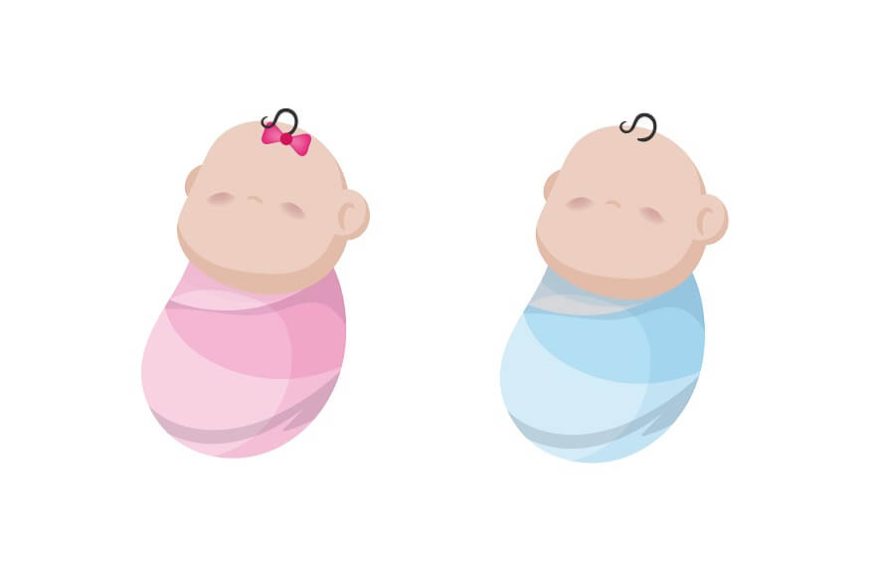Swaddling is much more than a technique; it’s a cherished tradition deeply interwoven into the fabric of Indian culture. It’s the gentle and loving art of cocooning your precious bundle of joy in a warm blanket, creating a secure haven filled with comfort and the reassuring embrace of safety. In this blog, we’re excited to take you on a deep exploration of the world of swaddling, highlighting its countless benefits. And, by the end of our journey, you can expect a comprehensive, step-by-step guide that will empower you to swaddle your little one safely and effectively, ensuring their well-being and contentment.
What is Swaddling?
Swaddling is like the closest thing to recreating that cosy, secure vibe of the womb. You’re taking your baby and wrapping them up in this soft, snuggly blanket, and it’s not just about keeping them toasty warm; it’s like, this warm, loving hug that totally soothes and settles them. Super simple, right? But here’s the kicker – you’ve gotta swaddle ’em up the right way to make sure your little munchkin is safe and comfy.
Why Swaddle a Baby?
Swaddling is beneficial for several reasons. It aids in calming the baby, reducing crying, and enhancing sleep quality. By mimicking the snug environment of the womb, swaddling can significantly soothe and comfort newborns. It also helps in preventing the startle reflex, which can wake a baby. Moreover, swaddling can assist in maintaining a consistent body temperature, crucial for newborns who can’t regulate their temperature as adults do. That should answer the eternal question, why swaddle a baby?
Temperature Regulation and Comfort
Swaddling aids in maintaining a steady body temperature for infants. Newborns, particularly in the first few weeks, struggle to regulate their body temperature. Swaddling offers a controlled environment, reducing the risk of overheating or getting too cold. It’s important, however, to use breathable fabrics and avoid over-layering.
Safety Considerations in Swaddling
While swaddling offers numerous benefits, it’s crucial to swaddle your baby safely. Incorrect swaddling techniques can lead to problems like hip dysplasia or overheating. Always ensure the swaddle is snug but allows for hip movement, and never covers the baby’s head. Monitoring the baby’s temperature and using breathable fabrics are also key safety practices.
How to Swaddle a Baby Effectively
Swaddling a baby requires following specific steps to ensure it’s done safely and comfortably:
Here, we discuss how to swaddle a baby properly.
- Use a Square Blanket:
- Position the Baby:
- Secure the Arms:
- Wrap the Lower Body:
- Complete the Wrap:
Opt for a soft, lightweight blanket. Lay it in a diamond shape and fold down the top corner.
Place the baby face-up on the blanket, with shoulders slightly above the folded edge.
Wrap the right side of the blanket over the baby, tucking it under the left side, while keeping the left arm free.
Fold the bottom corner up over the baby’s legs, ensuring there is enough room for hip movement.
Bring the left side of the blanket over the baby, wrapping it securely while allowing for some movement.
How Long to Swaddle Baby
The appropriate duration for swaddling varies. Infants should be swaddled until they are three to four months old. This is a recommended practice. But you must put your baby’s safety first, especially when they’re sleeping. It’s time to cease swaddling your child if you observe that they are beginning to roll over on their own or if they are able to remove themselves from the wrap.
Safety Tips for Effective Swaddling
Right Fabric: Use a lightweight, breathable fabric to prevent overheating.
- Check Tightness:
- Avoid Overheating:
- Proper Positioning:
- Watch for Developmental Cues:
Ensure the swaddle is snug but not too tight, allowing for leg and hip movement.
Regularly check if the baby feels too hot and adjust the room temperature or clothing accordingly.
The swaddle should be wrapped around the baby’s chest, not covering their neck or face.
Start transitioning from swaddling when the baby shows signs of rolling or increased activity.
Understanding Baby’s Sleep Patterns
Understanding and adapting to your baby’s evolving sleep patterns is crucial. Each infant has unique sleep needs and behaviours. Parents should observe their baby’s sleep cues and adjust routines accordingly, ensuring a conducive sleep environment that evolves with the baby’s growth.
The Importance of Comfortable Sleepwear
Choosing the right sleepwear for your baby enhances comfort and safety during sleep. Opt for soft, breathable materials that suit the ambient temperature. Proper sleepwear can complement the swaddling technique, ensuring your baby sleeps peacefully and safely.
The Benefits of Swaddling
Enhanced Neuromuscular Development
Swaddling, contrary to myths suggesting it hinders motor development, actually promotes neuromuscular development in infants. The gentle pressure of a swaddle mimics the womb’s environment, providing a familiar, comforting boundary. This containment helps newborns develop better spatial awareness and control over their limb movements. As they push against the swaddle, they strengthen their muscles and refine motor skills, laying a healthy foundation for future physical development.
Swaddling and SIDS Prevention
One of the most important advantages of swaddling is that it lowers the incidence of Sudden Infant Death Syndrome (SIDS). Swaddling is a safer alternative to unsecured bedding, which can lead to asphyxia. Swaddling your infant properly can help prevent them from rolling onto their stomach during sleep, which raises the risk of SIDS. However, it’s vital to transition away from swaddling as your baby grows, especially once they start showing signs of rolling over, to keep them safe during their sleep.
Colic and Reflux Relief
For babies suffering from colic or gastroesophageal reflux, swaddling can be a soothing remedy. The snugness of a swaddle provides a sense of security that can calm a colicky baby, potentially reducing episodes of prolonged crying. Additionally, swaddling can aid in maintaining a semi-upright position, especially when combined with appropriate propping, thereby alleviating the discomfort caused by reflux. This position can help in keeping the stomach contents down, providing relief to the baby.
Swaddling in Different Cultures
Swaddling, while universal in its application, varies intriguingly across cultures. In India, swaddling is often accompanied by gentle massages and lullabies, integrating it into a broader nurturing practice. Each culture brings its own nuances to swaddling, reflecting a rich tapestry of parental care. These variations showcase the adaptability and the enduring relevance of swaddling in child-rearing practices worldwide. Embracing such diversity, parents can learn and incorporate different swaddling techniques and rituals, enriching their own parenting experience and offering their babies varied forms of comfort and care.
At EuroKids, we understand the complexities and joys of parenting. Our approach to early childhood education incorporates modern, scientifically-backed methods. Explore our programs and resources tailored for new parents, and give your child the best start in life.















